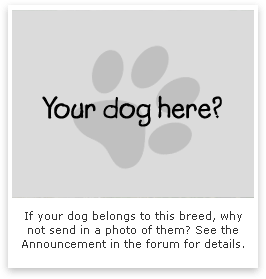OriginAlso known as the Little Lion Dog the Lowchen (pronounced lerv-chun) is an old breed believed to be descended from Tibetan dogs. Many authorities consider it to be a member of the Bichon/Poodle family and to have evolved in the Mediterranean countries. Other sources maintain that the Lowchen predates both. Certainly European drawings, painting and writings from the 15th century onward depict and describe dogs which bear an unmistakable resemblance to the modern ‘lion dog’. It is unclear whether the credit for the Lowchen’s development lies with Spain, Italy, Holland, Germany, France or Russia, but it is officially regarded as being a French breed. Its popularity, which remained steady for more than 400 years, began to diminish at the start of the 20th century and after World War 2 the breed had all but disappeared. The plight of the Lowchen was first recognized and addressed by Madam Bennert of Brussels and her tireless work to preserve the breed was carried on by Dr Hans Rickert. From being recorded as the rarest breed in the world in 1960 the Lowchen is now safely re-established and increasing in popularity once again, but it remains one of the lesser known and rarely encountered Toys. The first Lowchen were imported into Britain in 1968 and the breed was accorded Kennel Club recognition in 1971.
Character:Cheerful, lively and deeply devoted to his owners the Lowchen is a most attractive dog and a delightful companion. He is an indoor breed - loving the comforts of home and the company of his people he is unsuited, physically and emotionally, to a life outside or to long periods of separation from his family. This need of company is balanced by a degree of willfulness and egoism. It is therefore important that he should be kindly but firmly educated as to his place in the household lest he over-estimate his importance and assume the role of leader. He is a friendly and sociable fellow both with people and, generally, other dogs but his self confidence and natural assertiveness may lead to challenges to other dogs of the same sex, and particularly dogs with whom he shares his home. Strangers approaching the house will be met with an early warning system which has few equals. He will fearlessly defend his territory with long, loud, intense barking. This barking can become a nuisance to neighbours so efforts must be made to discourage inappropriate ‘alarms’. Although he may at first glance appear to be quite fragile he is a sturdy, tough little dog as may be seen in the strong musculature of a show clipped Lowchen. He is very active and playful and enjoys vigorous games and is a good playmate for older children. Despite his love of cuddles and snuggles to treat him always like a dainty ornament would be to do him a disservice. His good temperament, his happy nature and his loyalty are the traits which have won him many admirers, and which continue to endear him to all those he meets.
Exercise:The Lowchen has an abundance of energy and needs frequent exercise. Much of this can be provided by playing around the home but regular walks should also be taken not only to keep him physically fit but also to prevent boredom by presenting him with interesting things to sniff and see. If a secure area can be found he will enjoy the opportunity to run around freely. His nimbleness and enthusiasm for exercise make him a good candidate for the canine sport of agility.
Training:All dogs large or small need, and should be entitled to receive, at least basic obedience training. Intelligence is an acknowledged trait of the Lowchen and training should not prove difficult as he is quick to learn, sensitive, and very willing to please those he loves and respects. All training should be based on rewards and praise for good efforts or a job well done. Severe verbal or physical corrections have no place in training and, if used, such methods will cause the dog to become fearful and anxious and will erode any bond between dog and handler. Socialization should be commenced in early puppyhood. By introducing the pup to as many as possible of the types of people, animals and situations he may encounter during his lifetime he will develop into a well-adjusted, happy, confident adult.
|











